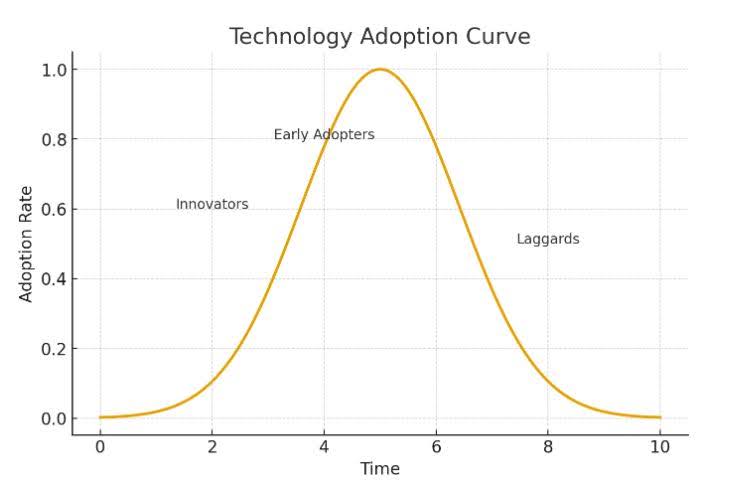How to Strategically Market in a world of massive innovation

Artificial Intelligence has been around for decades but most just never fully comprehended the potential. With the advent of large language models, humanization in interacting with these LLMs has brought an entirely new dynamic to how the impossible becomes possible. A year ago, any article suggesting a human could fly like superman would be laughed at. Today the comment will be considered, reviewed and analyzed to first find out how, before dismissing the notion as nonsense all together.
So what does this have to do with marketing?
The extent to which innovation and ‘extreme’ concepts and ideas are being churned is beyond the average level of comprehension or imagination. And while companies are excitedly having their engineers and thinkers come out with the next jaw dropping release, they are failing to realize that without a clear and correct communication plan to the market the wins that they yearn are in fact a precursor to exponential failure after exhausting future efforts to push and force success.
If that’s a mouthful let me state this as I would to my children. Amazing ideas with incredible potential will fail if the marketing team isn’t engaged with the engineering team to provide the correct communication strategy. Without the perfect mix of engineering and marketing, innovation may very well become a future debt to the company. It’s painful to hear. Imagine, amazing innovation that could change the world and add incredible wealth to a company may just become the reason of its demise because of lack of correct marketing and communication roll out.
In fact when I was in Business School, we did a case on John Deere and how their engineering team had incredible game changing technology for farmers across North America. The case refers to a moment in 2016 when John Deere had over 50,000 employees, over $26.6 Billion in turn over, and a market place across the USA of over 2 Million farmers. They were introducing Precision agriculture to help farmers automate their tractors, control fuel usage, optimize watering of the crops, and decrease expense on pesticides all by geographically analyzing the farm and using the data for the machinery to act and apply appropriately. Imagine all the data on an app and literally in the palm of the farmers’ hands! The work load would decrease, crop yield increase, and margins increase as well. Yet because the innovators had no idea how to communicate the remarkable technology to ancient old farmers, the adoption rate at this moment in time is unofficially reported as under 1%.
Some may argue that this is unique to the circumstance of technology being introduced to a ‘dinosaur’ industry. Well, let me admit to the fact that in our own organization we have seen that without timing our innovations to the market situation, we too are involved with many projects ahead of our time. And if we try to pull an idea meant for the future to be released earlier in the time line, it’s even more important to ensure the marketing team evaluates the messaging and the communication to help with adoption and reduce risk of failure. This too in an industry that’s in actual fact very innovative (sub-surface laser engraving) and 3D photo generation.
When I teach this very concept to my own students and laser business owners, I share with them a chart showcasing adoption rate against time. Here’s what it looks like in a technology adoption curve:

Innovators adopt first. Early adopters second, and laggards last.
The key take away here is to ensure that your marketing message is accurate for the time you’re at on the curve. At the beginning marketing should be targeted to the innovators. However, as you start to see early adopters marketing needs to change and pivot to early adopters. We had this exact experience when we released our portable 3D Crystal machine. It had a cool name (‘JetMini’), and amazing AI built in for maximum success. However and brilliantly may I add, it wasn’t the potential success or the revenue opportunity that our marketing team focused on at the beginning when it came to messaging. It was the technical specs and ‘behind the scenes’ gadgetry that we focused on in order to excite those innovator enthusiasts to engage with the concept and product and ultimately purchase. As we moved into the stage of early adopters we started to focus on the business cases, actual revenue models, the fun and entertaining side of the business and actual testimonials from users. Had we not understood the marketing strategy, we would have been perplexed thinking that the technology had no demand instead of celebrating an industry changing 3D machine. Our ability to communicate correctly ensured that adoption was a success.
Strategic marketing in today’s climate of innovation means for companies to release new technologies in stages. If a thirsty person on the verge of death is given a gallon of water to drink, they may very well drown themselves in sudden immense consumption beyond their limit. When releasing incredible innovation, my observation and suggestion remains to do so incrementally and as complementary to existing solutions the market is comfortable with. If the cell phone was introduced as a sudden replacement to the home phone back in the 90’s, it could have failed. But by gradually introducing it as a complementary option, today it has inevitably almost replaced the traditional phone anyways. John Deere attempted to replace the comfortable family way of farming too quick and as such it resulted in a much slower adoption rate. Uncertainty will take precedence. If the market is uncertain, they would rather keep status quo than risk change. So while the old saying goes “the only thing constant in life is change”, it’s really a hybrid cohesion of innovators and communicators (marketers) that will fuel extreme change to occur effectively.
Author: Riyaz Datoo was educated at the Harvard School of Business with a focus on strategic marketing and artificial intelligence. He is the founder of 3DCrystal.com and has spearheaded and led the advance of 3D Crystal technology. A public speaker and teacher, as of the date of this publication he has facilitated over 1100 venues and entrepreneurs to start the 3D Crystal business across 6 continents.

Source: How to Strategically Market in a world of massive innovation



